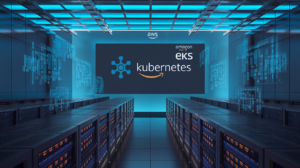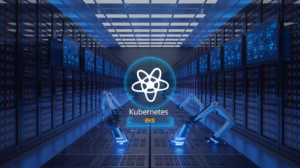Ever spent a week building a container setup only to learn there’s a managed service that could have saved you 90% of the headache? You’re not alone.
DevOps teams everywhere are drowning in container orchestration options while deadlines tick closer. Kubernetes, ECS, Fargate, Docker Swarm—each promising to be your infrastructure savior.
This comprehensive comparison of container orchestration platforms will save you from the painful trial-and-error most engineering teams suffer through. We’ve done the heavy lifting (and made the mistakes) so you don’t have to.
The decision between these platforms isn’t just about features—it’s about how they fit your specific workflow, team size, and future scaling plans.
But here’s what nobody tells you about these container wars…
Understanding Container Orchestration Fundamentals
A. What container orchestration actually means
Container orchestration isn’t just a fancy tech term – it’s what keeps your containerized applications from turning into complete chaos. Think of it as the conductor of your container symphony, coordinating where and when containers run, how they talk to each other, and what happens when things go sideways.
At its core, orchestration automates the deployment, scaling, networking, and lifecycle management of containers. Instead of manually spinning up Docker containers and crossing your fingers, orchestration platforms give you declarative control – you tell it what you want running, and it handles the rest.
B. Key challenges solved by orchestration platforms
Ever tried keeping dozens of containers running smoothly across multiple servers? Yeah, it’s a nightmare without orchestration. Here’s what these platforms tackle:
- Resource allocation: Placing containers where they make sense based on CPU, memory needs
- High availability: Automatically replacing failed containers without you waking up at 3 AM
- Networking: Creating complex meshes so containers can find each other securely
- Storage management: Ensuring containers have persistent data when needed
- Secret handling: Managing API keys, passwords, and certificates without exposing them
- Load balancing: Spreading traffic evenly across container instances
C. Evolution of containerization technologies
Container tech didn’t just pop up overnight. The journey’s been wild:
First came basic containers (remember LXC?). Then Docker exploded onto the scene around 2013, making containers accessible to mere mortals. But running individual containers quickly got messy.
Early orchestrators like Docker Compose handled simple multi-container setups. As complexity grew, battle-tested solutions emerged: Kubernetes (born at Google), Docker Swarm (from Docker itself), and AWS with ECS and later Fargate bringing serverless containers to the party.
D. Critical features for enterprise-grade orchestration
When betting your business on containers, you need these non-negotiable features:
- Self-healing: Automatic recovery when containers or nodes fail
- Rolling updates: Zero-downtime deployments and rollbacks
- Auto-scaling: Adding/removing containers based on demand
- Service discovery: Containers finding each other automatically
- Configuration management: Externalized configs that adapt to environments
- Monitoring & logging: Visibility into what’s happening
- Security controls: RBAC, network policies, and vulnerability scanning
- Multi-region support: Distributing workloads geographically
The orchestration platform you choose dramatically impacts your operations, development velocity, and cloud costs. Choose wisely – migrations aren’t fun.
Kubernetes: The Enterprise Standard
A. Core architecture and component breakdown
Kubernetes isn’t just a container platform—it’s a complete orchestration powerhouse. At its heart sits the Control Plane, essentially the brain of the operation. This includes:
- API Server: The front door for all your requests
- etcd: The database where all your cluster data lives
- Scheduler: Decides which node gets which workload
- Controller Manager: Keeps things running as expected
Then you’ve got your worker nodes where the actual containers run. Each node packs:
- Kubelet: The node’s captain, talking to the control plane
- Container Runtime: Your Docker (or containerd, CRI-O) that runs the actual containers
- Kube-proxy: Handles networking between pods
The smallest deployment unit? Pods. Think of them as cozy apartments for one or more containers that need to stick together.
B. Scalability advantages for large deployments
Kubernetes absolutely shines when things get big. We’re talking thousands of containers across hundreds of nodes big.
Auto-scaling happens at multiple levels:
- Horizontal Pod Autoscaler adjusts pod counts based on CPU/memory
- Cluster Autoscaler adds/removes nodes when resources get tight
- Vertical Pod Autoscaler right-sizes your resource requests
Cloud giants love Kubernetes because it handles massive workloads without breaking a sweat. Need to scale from 10 to 1000 instances in minutes? No problem.
The declarative approach means you tell Kubernetes “I want 5 replicas” and it makes it happen—whether scaling up or recovering from failures.
C. Extensive ecosystem and community support
The Kubernetes ecosystem is absolutely massive. CNCF (Cloud Native Computing Foundation) maintains a landscape chart that’ll make your head spin—hundreds of tools designed specifically for Kubernetes.
Some standout projects include:
- Helm: The package manager that makes deployments a breeze
- Prometheus: Monitoring that integrates natively
- Istio: Service mesh for complex networking
- Knative: Serverless on Kubernetes
With thousands of contributors and millions of lines of code committed, Kubernetes has the most active community of any container platform, period. This translates to:
- Faster bug fixes
- Regular feature updates
- Enterprise support options from multiple vendors
- Abundant documentation and tutorials
D. Learning curve challenges and resource requirements
Kubernetes doesn’t hide its complexity. The learning curve is steep—like mountaineering steep.
Getting started means wrapping your head around pods, deployments, services, ingress, configmaps, and about fifty other concepts. The YAML configuration files can stretch for hundreds of lines for even moderately complex applications.
Resource-wise, Kubernetes is hungry:
- Minimum 2 CPUs and 2GB RAM per node
- Production clusters typically need 3+ master nodes
- etcd requires SSD storage for performance
- Overhead of about 20-30% for Kubernetes components
Even simple clusters need a dedicated ops team or serious DevOps skills. The old joke “Kubernetes is Greek for ‘why is my DNS broken again?'” exists for a reason.
E. Best use cases for Kubernetes adoption
Kubernetes isn’t for everyone, but it’s unbeatable for:
- Microservice architectures: When you’re juggling dozens of services that need independent scaling
- Multi-cloud deployments: Need to run the same workloads on AWS, Azure, and on-prem? K8s gives you consistency
- Large engineering teams: Multiple teams can deploy to the same cluster without stepping on each other’s toes
- Stateful applications: StatefulSets provide ordered deployment and stable networking for databases
Avoid Kubernetes if you’re running simple applications, have limited DevOps resources, or need to minimize operational complexity. For startups with a handful of services, the overhead rarely justifies the benefits initially.
The smartest adopters start with managed services like GKE, EKS, or AKS before attempting to run their own clusters.
Amazon ECS: AWS-Native Container Management
Integration with AWS service ecosystem
AWS ECS doesn’t play around when it comes to integration. It’s like that friend who knows everyone at the party. Need CloudWatch metrics? Done. Want to route traffic with Application Load Balancers? Easy. Looking to secure containers with IAM roles? No problem.
The beauty of ECS is how it just clicks with other AWS services. You can set up auto-scaling based on CloudWatch alarms, use AWS CodePipeline for CI/CD, or even deploy containers through CloudFormation templates. It’s practically plug-and-play for existing AWS customers.
Simplified deployment model vs. competitors
Kubernetes might be powerful, but let’s talk real talk – it’s complicated. ECS strips away the complexity with a straightforward deployment model. You define task definitions (your container specs), create services (how many containers to run), and that’s basically it.
Compare that to Kubernetes where you’re juggling pods, deployments, services, ingress controllers… ECS just makes more sense for teams that want to ship code, not become container experts.
Cost structure and optimization opportunities
Money talks. With ECS, you only pay for the EC2 instances running your containers. Or better yet, go serverless with Fargate and pay only for CPU and memory resources used.
Smart teams leverage Spot Instances with ECS to slash costs by up to a whopping 90%. Plus, the Reserved Instance pricing for predictable workloads can make your finance team actually smile for once.
Limitations in multi-cloud environments
The AWS relationship has a catch. ECS is AWS-only, full stop. Once you’re in, you’re in.
If your strategy includes multi-cloud or you’re nervous about vendor lock-in, this is where ECS shows its weakness. There’s no running ECS on Azure or GCP. No deploying to your on-premises data center. Kubernetes wins the flexibility battle here, hands down.
Teams committed to AWS won’t care. But if you’re keeping your options open, this limitation might be the deal-breaker.
AWS Fargate: Serverless Container Execution
Eliminating infrastructure management overhead
Gone are the days of babysitting servers. AWS Fargate strips away all that infrastructure headache you’ve been dealing with. No more patching EC2 instances at 2 AM or figuring out why your node suddenly died.
With Fargate, you just define your container requirements – CPU, memory, networking – and AWS handles the rest. You’re literally just saying “Here’s my container, run it” and walking away. No clusters to manage, no capacity planning nightmares.
Pricing model and cost considerations
Fargate’s pricing is straightforward but can shock you if you’re not careful. You pay exactly for the vCPU and memory resources your containers consume, down to the second.
CPU: $0.04048 per vCPU-hour
Memory: $0.004445 per GB-hour
This means predictable billing (yay!) but potentially higher costs than EC2 for steady-state workloads. The premium you pay is for the operational simplicity. For bursty workloads with idle periods? Fargate often wins the cost game.
Performance characteristics and limitations
Fargate containers spin up faster than EC2 instances but slower than regular container launches. We’re talking 10-30 seconds typically. Not instant, but reasonable.
The performance ceiling is real, though:
- Max 4 vCPU and 30GB memory per task
- Limited persistent storage options
- No GPU support (yet)
- Network throughput tied to task size
For most web apps and microservices? Total non-issue. For heavy compute or specialized workloads? You might hit walls.
Integration with ECS and EKS
Fargate isn’t a standalone service – it’s the compute engine behind your container orchestrators.
With ECS, integration is native and mature. Set your launch type to “FARGATE” and you’re done. Super simple.
EKS with Fargate is newer but powerful. Define Fargate profiles that specify which pods run serverless. The cool part? You can mix and match – critical components on EC2 nodes, everything else on Fargate.
Ideal workload profiles for Fargate
Fargate shines brightest with:
- Microservices with variable load
- Batch processing jobs
- Dev/test environments
- Low-admin-overhead requirements
If your workload is predictable 24/7 with high resource demands, EC2 might be cheaper. But if you value engineering time over slightly higher compute costs, Fargate makes perfect sense.
Think of Fargate as premium managed hosting for your containers. You pay more to worry less.
Docker Swarm: Simplicity-First Orchestration
Native Docker integration benefits
Docker Swarm wins the “just works” award hands down. If you’re already using Docker, Swarm feels like home – it’s built right into the Docker engine. No need to learn a completely new ecosystem or install extra components.
# That's it. Seriously.
docker swarm init
One command and you’re up and running. The same Docker CLI commands you already know work with Swarm. Your existing Docker Compose files? They work too, with minimal tweaking.
Ease of setup and management
While Kubernetes makes you feel like you need a PhD just to get started, Swarm takes the opposite approach. The learning curve is basically a gentle slope.
Need to scale a service? It’s dead simple:
docker service scale myapp=5
The built-in load balancer handles traffic distribution automatically. Service discovery? Built-in. Secret management? Yep, got that too. All without the complexity monster knocking at your door.
Performance in small to medium deployments
For teams supporting a handful of services or microapps, Swarm delivers impressive performance without the overhead. The control plane stays responsive even under load, and container scheduling happens almost instantly.
Limitations for complex enterprise scenarios
Truth bomb: Swarm hits a ceiling that Kubernetes doesn’t. When your infrastructure grows beyond a certain point, limitations become apparent:
- Less robust auto-healing capabilities
- Fewer networking options
- Limited extensibility (no custom resource definitions)
- Smaller ecosystem of management tools
- Less granular deployment controls
For startups and mid-size applications, these tradeoffs often don’t matter. But enterprise-scale deployments eventually outgrow what Swarm can comfortably handle.
Head-to-Head Comparison Metrics
A. Deployment complexity and management overhead
Let’s cut to the chase – deployment complexity varies wildly across these platforms:
Kubernetes is like that powerful but complicated Swiss Army knife. Yeah, it’s flexible, but the learning curve? Steep as a cliff. You’ll need dedicated DevOps talent to tame this beast properly.
ECS simplifies things considerably if you’re already in the AWS ecosystem. Their console makes basic deployments pretty straightforward, though complex configurations still require some AWS expertise.
Fargate takes the “you don’t worry about it” approach. No infrastructure management needed – just deploy your containers and AWS handles the rest. Perfect for teams without infrastructure specialists.
Docker Swarm wins the simplicity contest. If you know Docker, you’re already halfway there. The commands are intuitive, making it ideal for smaller deployments or teams new to containerization.
B. Scaling capabilities and performance under load
When traffic spikes hit your application like a tidal wave:
Kubernetes shines brightest here. Its auto-scaling is extremely robust, handling massive workloads while efficiently distributing resources. That’s why Netflix, Spotify and other giants love it.
ECS scales well but requires more configuration to achieve the same elasticity as Kubernetes. Its integration with other AWS services does make scaling smoother within that ecosystem.
Fargate eliminates scaling headaches entirely. It automatically provisions the exact compute needed for your containers, though you sacrifice some fine-tuning capabilities.
Docker Swarm handles basic scaling adequately but stumbles with highly complex, dynamic workloads. It just doesn’t have the sophisticated scheduling algorithms of its competitors.
C. Security features and compliance considerations
Security isn’t optional these days:
Kubernetes offers robust RBAC (Role-Based Access Control), pod security policies, and network policies – but requires expertise to implement correctly. Many security features aren’t enabled by default.
ECS benefits from AWS’s compliance certifications (SOC, HIPAA, PCI-DSS, etc.) and integrates with AWS security services like IAM, KMS, and Security Groups. This makes compliance easier to achieve.
Fargate inherits ECS’s security benefits while adding isolation guarantees. Your containers run in a dedicated kernel, reducing potential attack surfaces and providing strong workload isolation.
Docker Swarm provides basic security features like encrypted node communications and secrets management, but lacks the comprehensive security toolkit of Kubernetes or the AWS options.
D. Cost structure for different workload profiles
Money talks, so let’s break down where your dollars go:
Kubernetes can be cost-effective at scale but demands initial investment in expertise and infrastructure. Self-managed K8s requires you to pay for every node whether fully utilized or not.
ECS follows AWS’s pay-for-what-you-use model but still charges for the EC2 instances even when containers aren’t running at full capacity. Reserved instances can reduce costs for stable workloads.
Fargate wins for variable workloads with its true consumption-based pricing. You only pay for the actual compute resources your containers consume, down to the second. No more idle capacity costs!
Docker Swarm has no licensing costs, but like Kubernetes, you’re responsible for the underlying infrastructure. For small deployments, this simplicity can be cost-effective.
E. Ecosystem maturity and community support
The ecosystem around your platform can make or break your experience:
Kubernetes boasts the largest ecosystem by far. CNCF-backed tools, thousands of community contributors, extensive documentation, and countless third-party integrations. Whatever you need, someone’s built it.
ECS has strong AWS integration but a smaller third-party ecosystem. You’re somewhat limited to AWS’s tooling and release schedule, though AWS does prioritize ECS feature development.
Fargate inherits the AWS ecosystem limitations while adding serverless benefits. It’s maturing quickly but still lacks some of the flexibility of the more established platforms.
Docker Swarm’s ecosystem has steadily declined as Kubernetes dominance grew. New tooling and integrations are increasingly rare, making it better suited for simpler use cases that don’t require extensive third-party tools.
Real-World Decision Framework
A. Matching container platforms to business requirements
Look, choosing the right container platform isn’t a one-size-fits-all deal. It’s about what your business actually needs.
For startups and small teams with limited DevOps resources, Fargate or ECS makes sense. You can get containers running without managing infrastructure or becoming Kubernetes experts overnight.
If you’re an enterprise with complex microservices and a dedicated ops team? Kubernetes shines here. Yes, it’s complicated, but that complexity buys you unmatched flexibility.
Here’s a quick reality check:
| Business Need | Best Platform Choice |
|---|---|
| Minimal ops overhead | Fargate |
| Maximum control | Kubernetes |
| AWS-centric workflow | ECS |
| Simple deployment | Docker Swarm |
| Multi-cloud strategy | Kubernetes |
B. Migration considerations between platforms
Migrating between container platforms can be painful. I’m not sugarcoating this.
Moving from Docker Swarm to Kubernetes? You’ll need to rewrite your compose files into manifests and rethink networking.
ECS to Kubernetes migrations mean leaving the AWS comfort zone and setting up monitoring and logging from scratch.
The smart approach: start with a non-critical workload before moving everything. And don’t underestimate the people side – your team needs time to build new skills.
C. Hybrid approaches using multiple solutions
The dirty secret of container orchestration? Many companies use multiple platforms simultaneously.
You might run stateless apps on Fargate for simplicity while keeping data-intensive workloads on self-managed Kubernetes clusters. Or maybe your ML team needs Kubernetes while your web apps run happily on ECS.
This pragmatic approach lets you use the right tool for each job instead of forcing everything into one system.
D. Future-proofing your container strategy
Container tech changes fast. Remember when Docker Swarm was the hot new thing?
To avoid costly platform switches later:
- Pick platforms with strong communities and commercial backing
- Focus on portable configurations (Helm charts help)
- Consider GitOps workflows that work across platforms
- Build skills in containerization concepts, not just specific tools
The real future-proofing isn’t about picking the “winner” – it’s about building adaptable systems and teams that can evolve.
Choosing the right container orchestration platform is a critical decision that impacts deployment efficiency, scalability, and operational overhead. Kubernetes offers the most comprehensive feature set with broad community support, making it ideal for complex enterprise deployments. For those deeply integrated with AWS, ECS provides native integration with AWS services, while Fargate eliminates infrastructure management concerns. Docker Swarm remains relevant for teams prioritizing simplicity and quick setup with minimal learning curve.
The best orchestration solution depends on your specific requirements—team expertise, existing infrastructure, scalability needs, and budget constraints. Before making a decision, evaluate your organization’s technical capabilities, long-term cloud strategy, and operational preferences. Regardless of which platform you choose, containers have fundamentally transformed application deployment, and selecting the right orchestration tool will position your team for success in today’s cloud-native landscape.



















